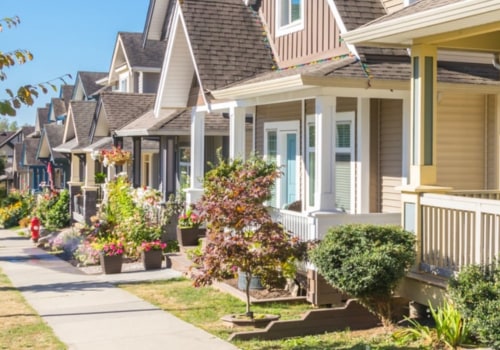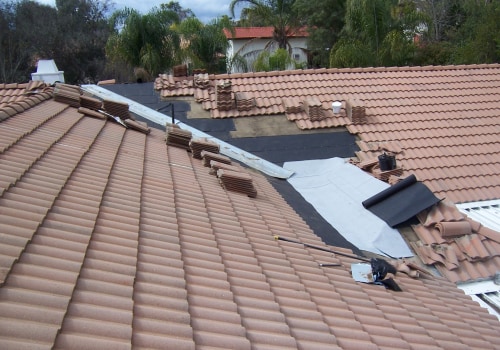The sales market is slow due to the doubling of mortgage rates, while the rental market is at. It has been recovering from the economic effects of the pandemic. Inventory shortages and strong buyer demand continued to drive home prices higher, and multiple offers on a limited number of homes were commonplace in most market segments. Current market dynamics point to a competitive advantage for New York City sellers right now.
The real estate market may be turning toward normality across the country as a result of rising interest rates and the increase in the number of sellers who list their homes. However, New York City is extremely unique in that rising rates don't necessarily slow down the demand for housing there. There is still a significant amount of market activity from buyers who are willing to pay in cash or have huge budgets and pay little or no attention to rising interest rates. Because of this, we can see a divide in the housing market in which demand for homes in higher price brackets remains strong, while demand for homes in lower price brackets begins to weaken.
Now let's look at the most recent trends in the New York City real estate market. The pandemic has hit New York City hard. As a result of the aftermath of the pandemic, people have moved to the suburbs, driving up housing prices in those areas. Those who stay in the city, on the other hand, are usually able to find a better home for less.
The New York City real estate market is currently a buyer's market, meaning that there are approximately more active homes for sale than there are buyers. The supply of homes is outpacing demand, favoring homebuyers who are managing to have a good influence on price negotiations. According to data from NeighborhoodScout, the cumulative appreciation rate over the ten years has been 73.92%, which is among the top 40% in the country. This is equivalent to an average annual property appreciation rate of 5.69%.
Although the pandemic has drastically affected the New York real estate market, over the past twelve months, New York's appreciation rate has been 12.33%. In the last quarter, data from NeighborhoodScout shows that New York's home appreciation rates were 2.15%, equivalent to an annual appreciation rate of 8.86%. Let's look at the price trends recorded by Zillow over the past few years. Since the last decade (August 2018), home values in New York City have appreciated by almost 66% (index of.
The ZHVI is not the average price of homes sold in a month within a geographical region. It is calculated by taking all the estimated home values for a given region and month (also called Z estimates), taking a median of those values and applying some adjustments to account for seasonality or errors in the estimates of individual homes. Therefore, it represents the entire housing stock and not just the homes that are listed or sold in a given month. This is Zillow's real estate market forecast for New York, New York and the New York-Newark-Jersey City subway.
According to their forecast, the dynamics of supply and demand are likely to push prices north again in the next 12 months. The StreetEasy market reports are a monthly summary of the sales and rental markets in Manhattan, Brooklyn and Queens. Two years of unpredictability have passed in the New York City market, but their latest data shows that the seasonality of the New York home sales market has returned. Homes sell on the market twenty days faster than at the same time last year.
As peak shopping season approaches, buyers are likely to see homes selling just as quickly, if not faster. The spring housing market will be competitive, but the increase in new inventory is encouraging. The recent increase in home prices should encourage more sellers to place their properties on the market, making it easier and more likely for buyers to find their ideal home. New York City's Quarterly Home Sales Market Trends New York's Recovery After the Pandemic For example, approximately one-third of homes are self-contained single-family homes, while nearly half take the form of small apartment buildings.
This creates an excellent opportunity for those looking for rental properties in Buffalo. You could buy a small apartment building with several tenants for the cost of a single rental property in a more expensive New York housing market. The Syracuse real estate market offers cheaper properties with a higher return on investment and a less hostile legal climate. It's one of the best options if you want to invest in New York State.
Another issue that influences the equation is the labor market. Many cities have a great quality of life, but hardly anyone can afford to live there. The Syracuse real estate market ranked 6.3 out of 10 in its labor market. That's better than rural areas and much of Upstate New York.
And that's why there's a slow flow of people moving to replace those who leave. That's why the Syracuse real estate market has a net migration of 5% or a stable population. This is in stark contrast to the depopulation observed in most cities in the Rust Belt. It also means that Syracuse real estate investment properties will maintain their value for the foreseeable future if they don't appreciate it.
Albany is a constantly appreciating real estate market. While it's not as famous or as hot as New York, it offers an affordable entry point and an enormous number of perpetual renters. Although it may not be a place where you want to live, many locals choose to stay and establish their homes here. And that will continue to drive demand for real estate investment properties in Albany, as long as they're priced appropriately.
Rochester's real estate market is stable and offers slow appreciation, affordable properties for outsiders, and good returns. It has strong long-term potential that is only enhanced if New York City collapses. And this is one of the reasons why being everything the Big Apple isn't is in your favor. The Rochester real estate market enjoys a healthy population profile.
About a quarter of the population is made up of children, and many are likely to stay because of the health of the labor market. It also means that Rochester's housing market won't crash if the labor market weakens, the way San Francisco collapses every time the tech bubble bursts. Others choose to stay here because of the low cost of living. Sign up to receive our main content on real estate investments.
Norada Real Estate Investments 30251 Golden Lantern, Suite E-261 Laguna Niguel, CA 92677. StreetEasy has identified April through June and September through October as the best times to buy in the city. Sellers are rushing to put their homes on the market in spring, knowing that there will be more potential buyers and, as a result, buyers will have access to more options. They're also more likely to receive a price cut. Buyers will see a price reduction of 10 to 20 percent between April and June, and up to 20 percent in September and October.
Average rental prices in the three boroughs of Manhattan, Brooklyn and Queens have reached a new all-time high. While it may not be ideal to move in cold temperatures, the best time to get a good deal in New York starts in September, when 12.5% of active ads receive a price reduction and sellers are more flexible and quick to negotiate offers. All of this means that if you want to buy, it's best that you don't try to time the market, so get in now. At the same time, Miller points out, banks are lending much more conservatively than in the years of the housing bubble.
That said, it will start slowly because fewer people move to the city in winter, generating more inventory than demand. Miller added that, based on the Fed's continued rise in interest rates, office towers with 40 percent vacancies, rising inflation and the ongoing war with Russia and Ukraine, he doesn't expect affordability to come any time soon. Both seasons have their own advantages; while spring is the most competitive, it also means that buyers have the most units to choose from; and in fall, buyers are likely to get bigger discounts. While the best time to shop in the rest of the country is towards the end of summer, in New York, shoppers will find the best deals if they decide to make a purchase in spring or fall, according to StreetEasy.
Read on to learn what time of year will give you the most options and the biggest savings when buying a home in New York. As New York approaches peak homebuying season, StreetEasy has compiled data to find out when are the best times for people to buy an apartment in the city. New leases expanded month after month for the fifth consecutive time, and the vacancy rate remained below 2 percent for the seventh consecutive month. Conversely, the worst time to buy in New York is during the winter months, between December and February, when there are fewer homes to choose from and less likely to get a discount.
A recently published report by New York brokerage agency Douglas Elliman analyzes average rental market costs in every district and doesn't look like it's going to calm down any time soon. . .



